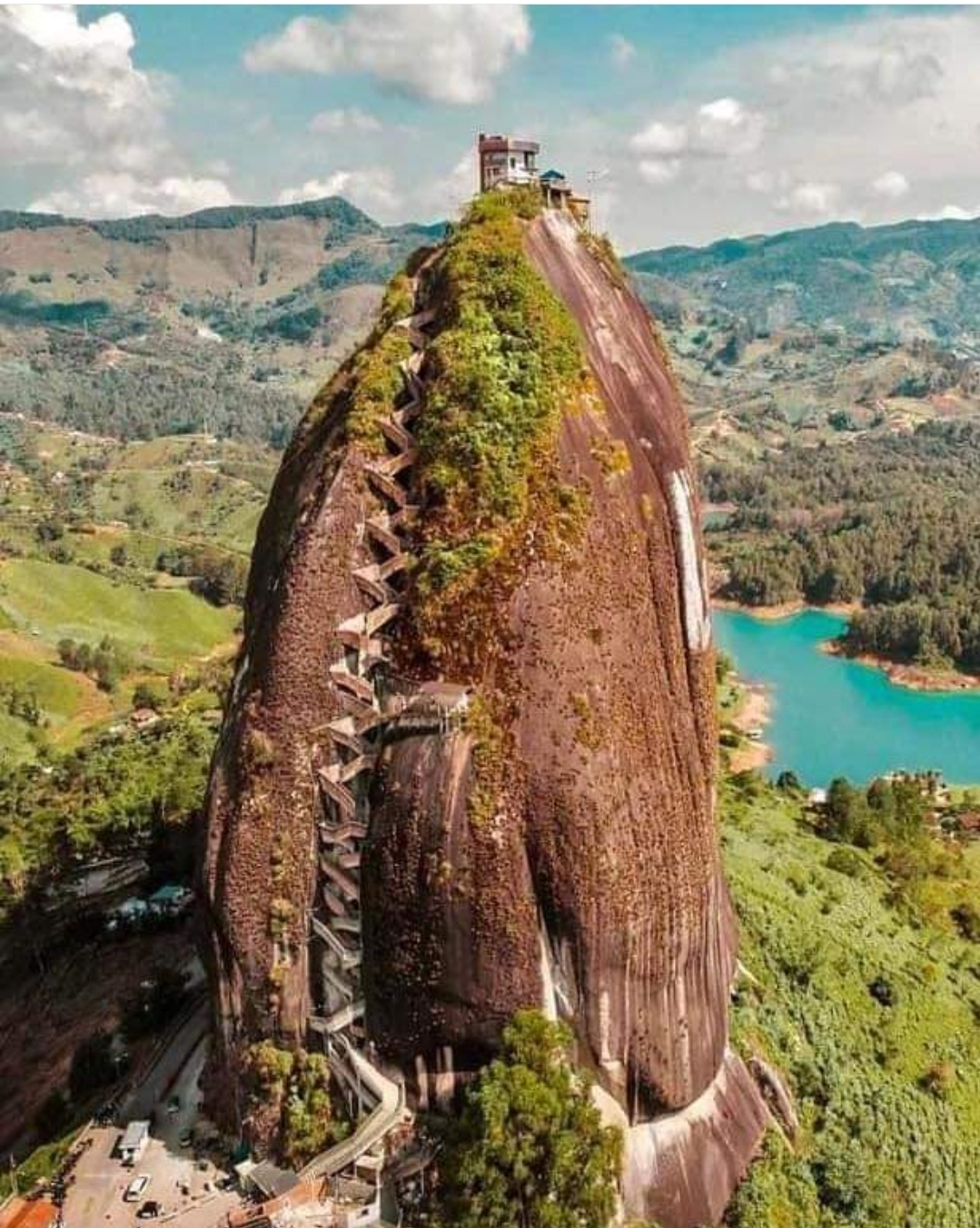La Piedra del Peñol: A Geological Challenge to Young Earth Creationism
La Piedra del Peñol, a colossal granite monolith rising dramatically above the Colombian landscape, stands as a testament to the vastness of geological time and the forces that have shaped our planet. Its very existence presents a profound challenge to Young Earth Creationism, a belief system that asserts the Earth is only a few thousand years old.
The Formation of Granite
Granite, the rock type that constitutes La Piedra del Peñol, is an igneous rock, meaning it forms from the cooling and solidification of magma or lava. The formation of granite involves complex processes deep within the Earth's crust, requiring immense heat and pressure over extended periods. Scientific estimates suggest that the granite that forms La Piedra del Peñol crystallized around 70 million years ago. This vast timescale directly contradicts the Young Earth Creationist model, which proposes a much shorter timeframe for Earth's history.
Erosion and Weathering
The towering presence of La Piedra del Peñol is not just a result of its formation; it's also a testament to the relentless forces of erosion and weathering. Over millions of years, wind, rain, and ice have sculpted the surrounding landscape, gradually revealing the monolith that we see today. The scale of this erosion process is immense, and the time required for it to carve out such a dramatic feature far exceeds the timescale proposed by Young Earth Creationism.
The Uniformitarian Principle
The understanding of La Piedra del Peñol's formation and the shaping of the surrounding landscape relies on the principle of uniformitarianism. This scientific principle posits that the same natural laws and processes that operate in the present have operated in the past. By observing the slow and gradual geological processes occurring today, we can infer that similar processes have been at work throughout Earth's history. The vast timescales required for the formation of La Piedra del Peñol and the shaping of the surrounding landscape align with the uniformitarian principle and stand in stark contrast to the Young Earth Creationist model.
Radiometric Dating
Radiometric dating, a technique used to determine the age of rocks and minerals based on the decay of radioactive isotopes, provides further evidence for the immense age of La Piedra del Peñol. By analyzing the ratios of parent and daughter isotopes within the granite, scientists can estimate the time that has elapsed since the rock crystallized. The results of these analyses consistently indicate ages far older than the timescale proposed by Young Earth Creationism.
Conclusion
La Piedra del Peñol, with its imposing presence and geological history, serves as a tangible reminder of the vastness of geological time. Its formation, exposure through erosion, and the scientific techniques used to date its age all point to a timescale that is irreconcilable with Young Earth Creationism. The existence of such geological wonders underscores the importance of scientific inquiry and the value of evidence-based understanding of our planet's history.




Comments
Post a Comment